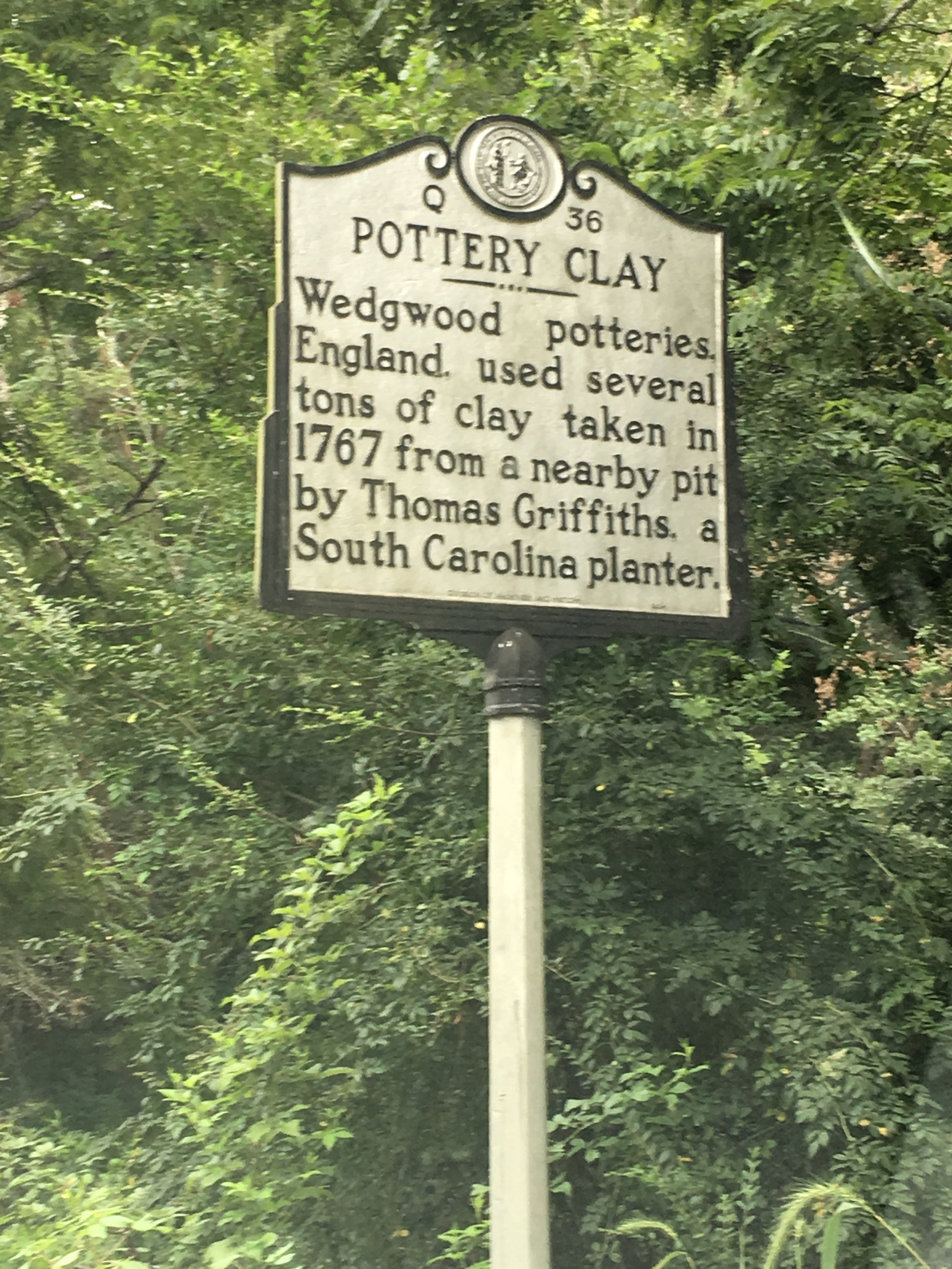
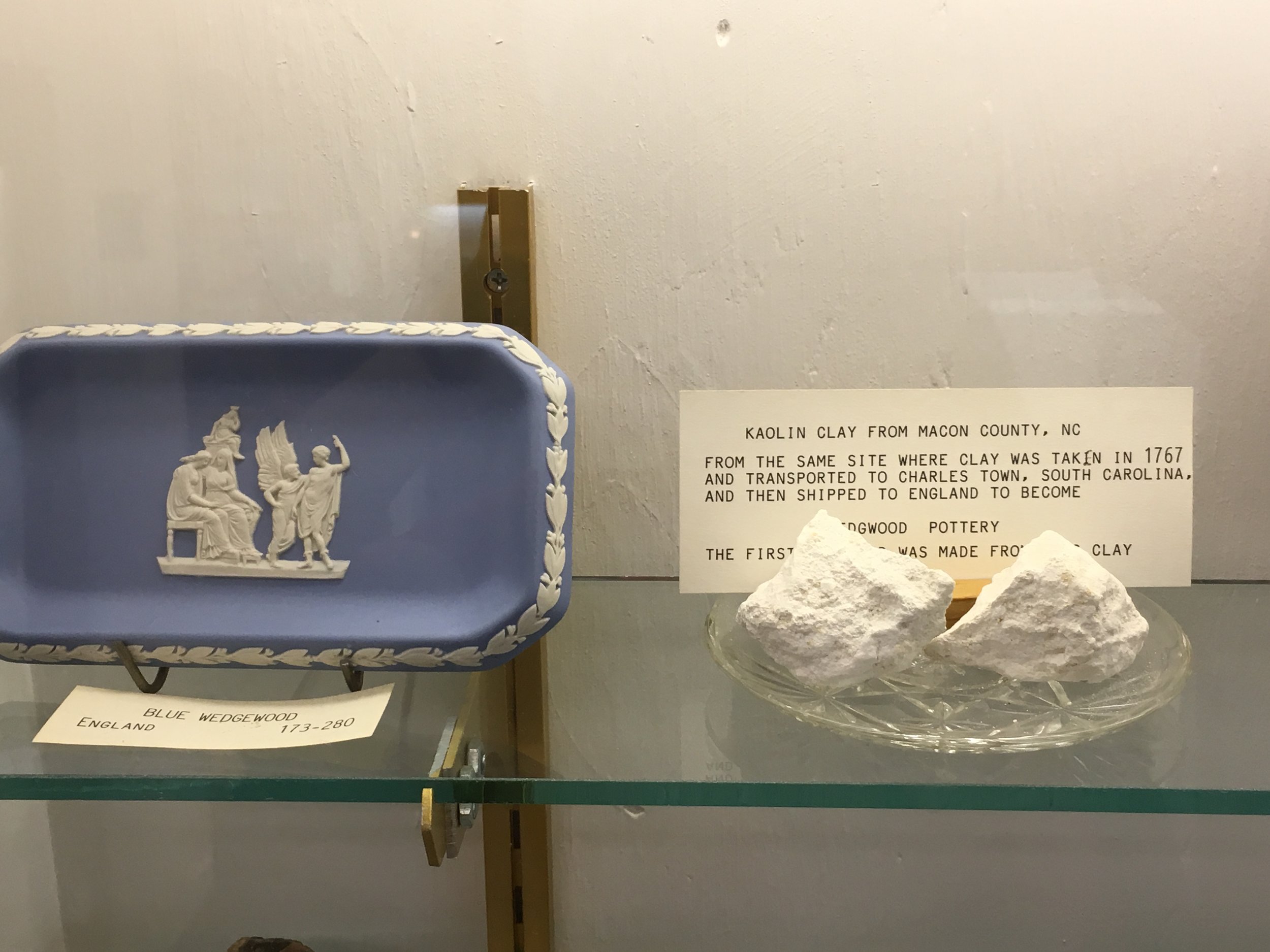
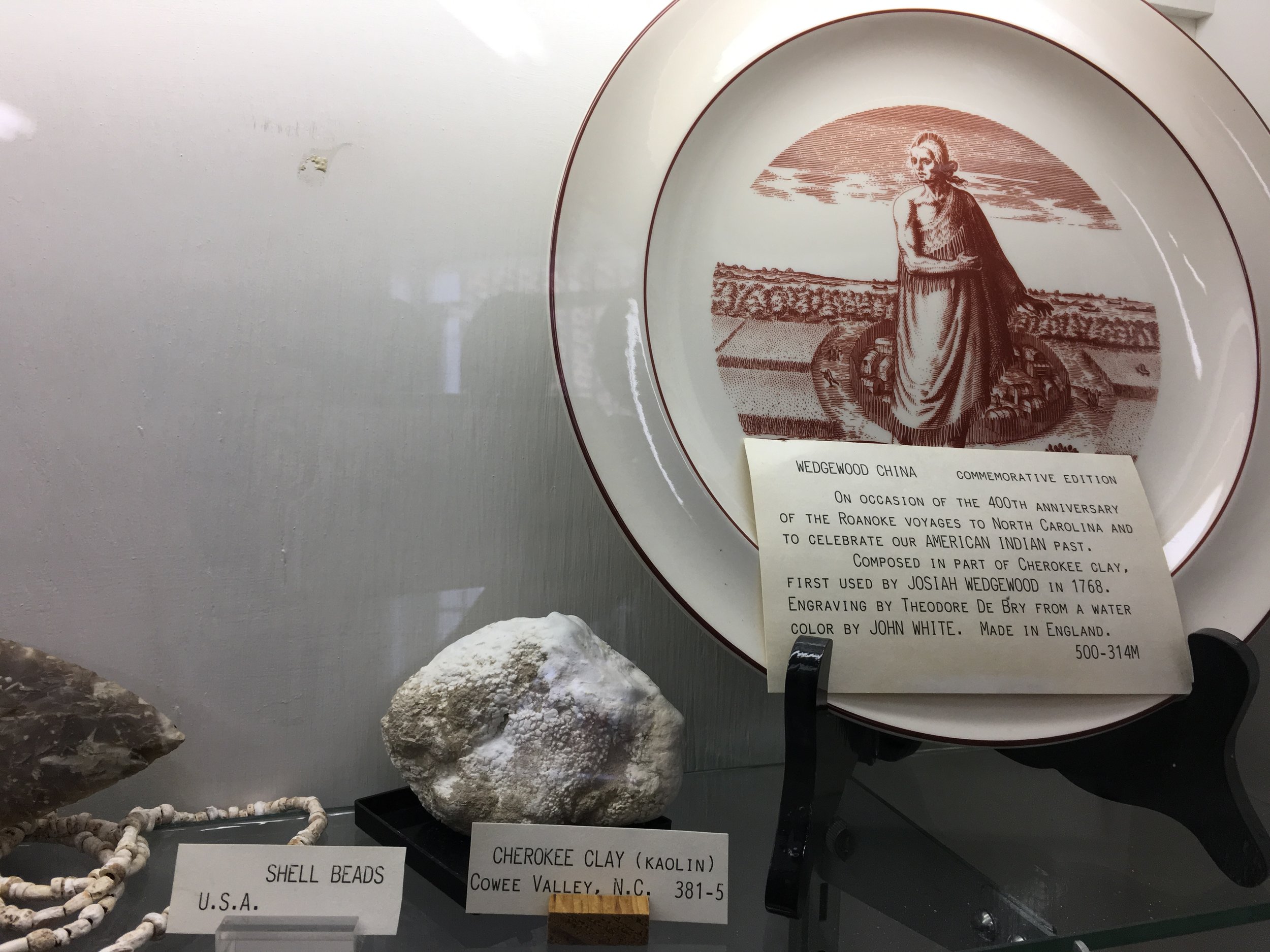
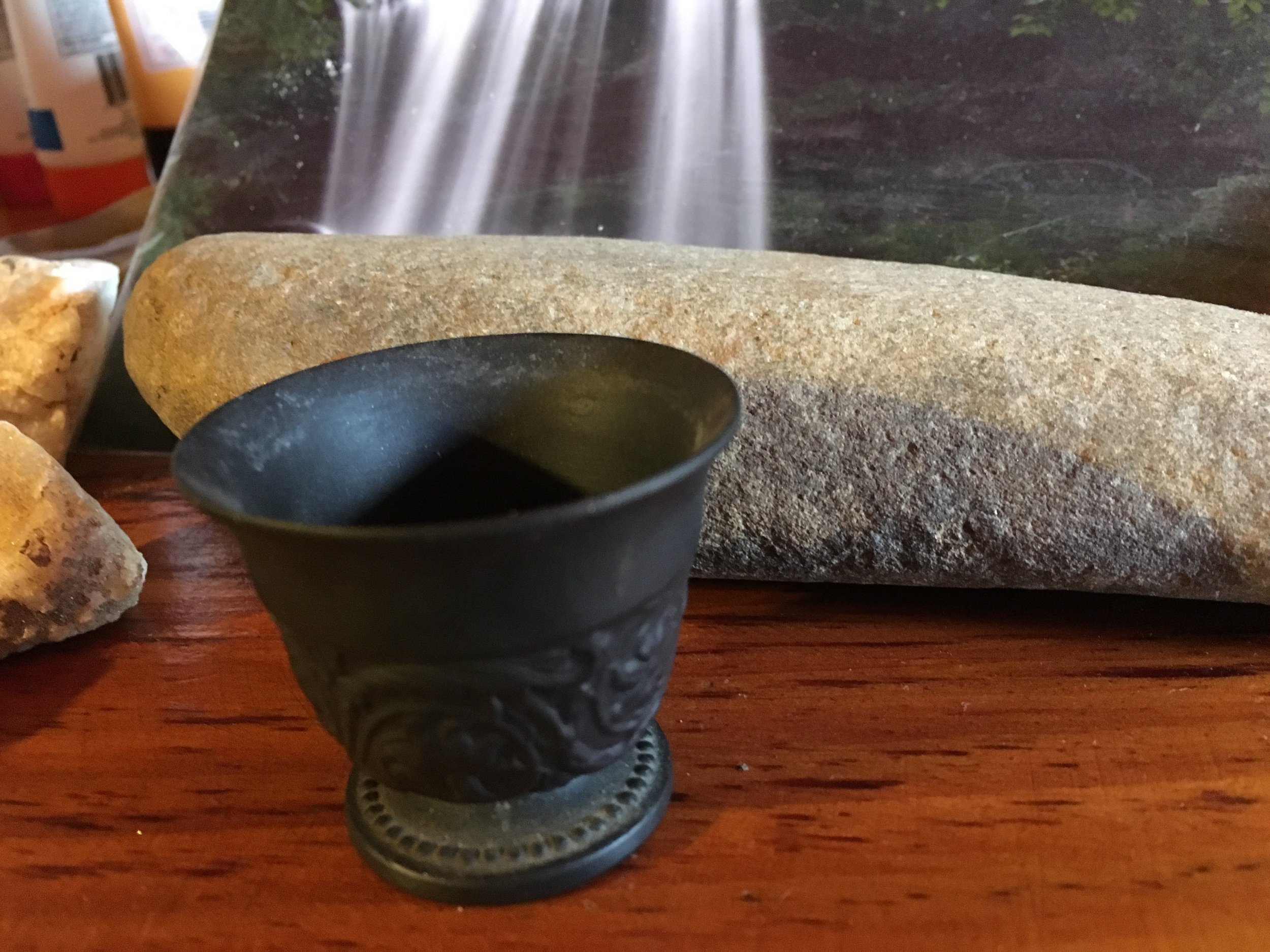
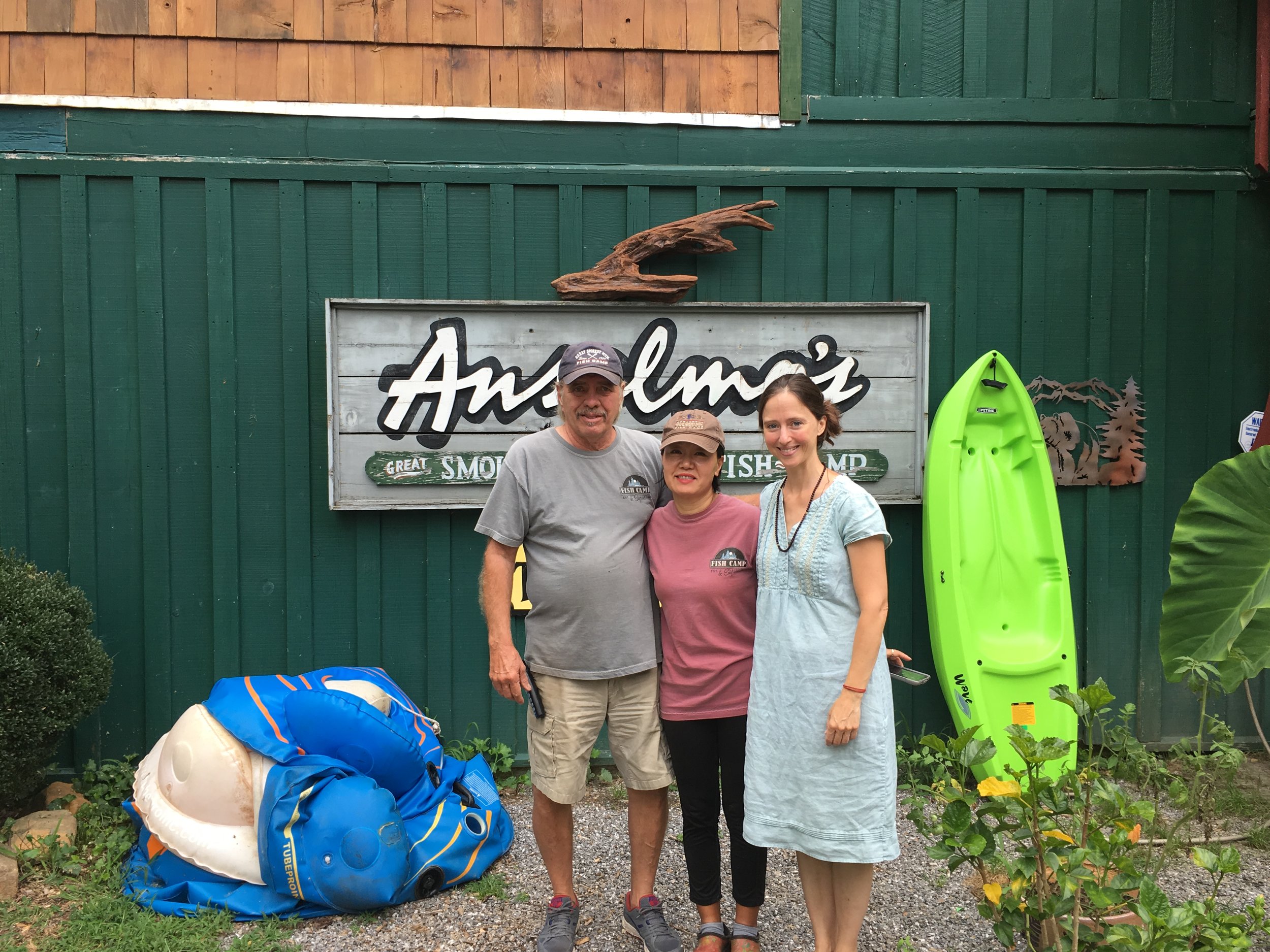
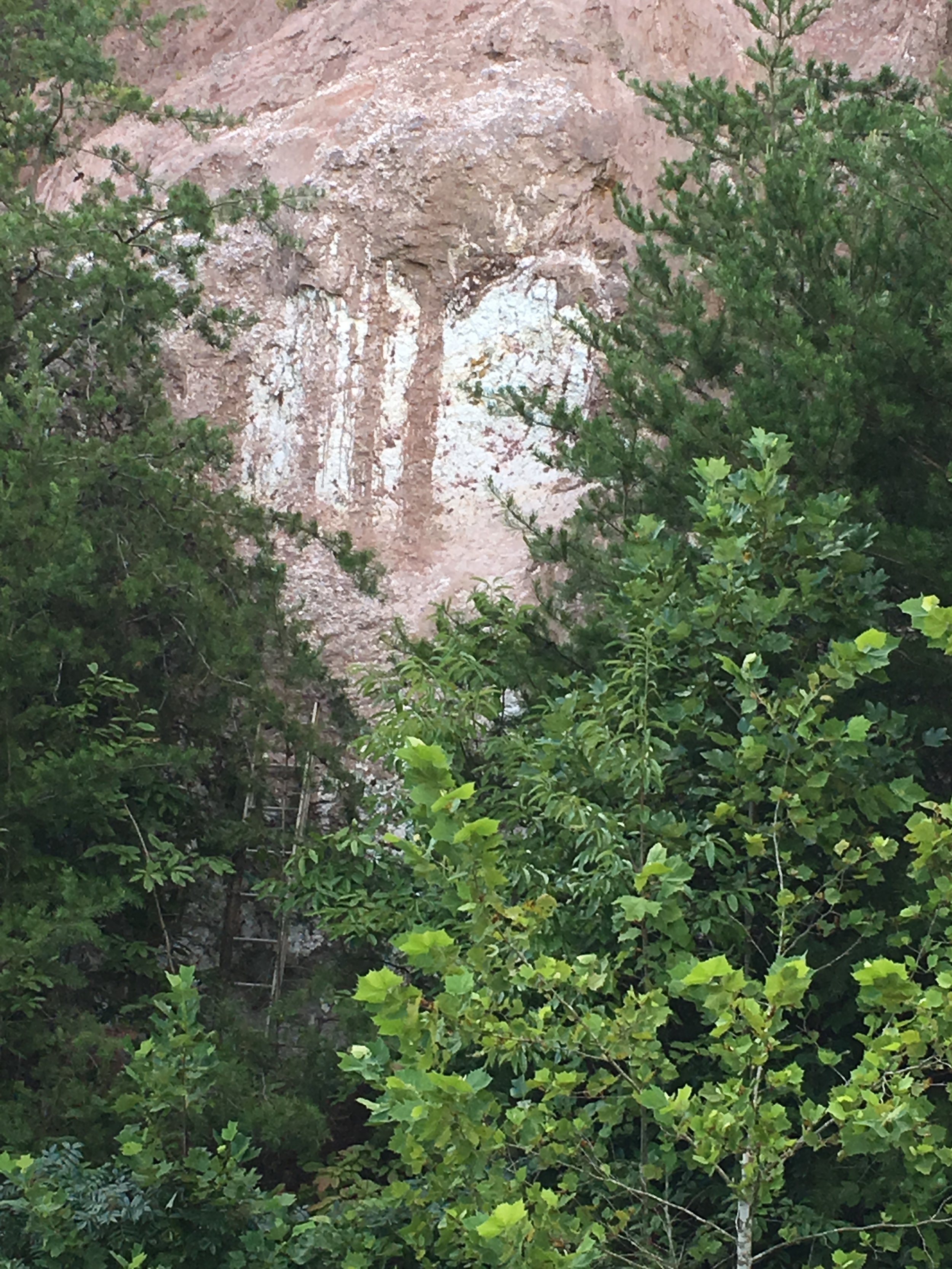

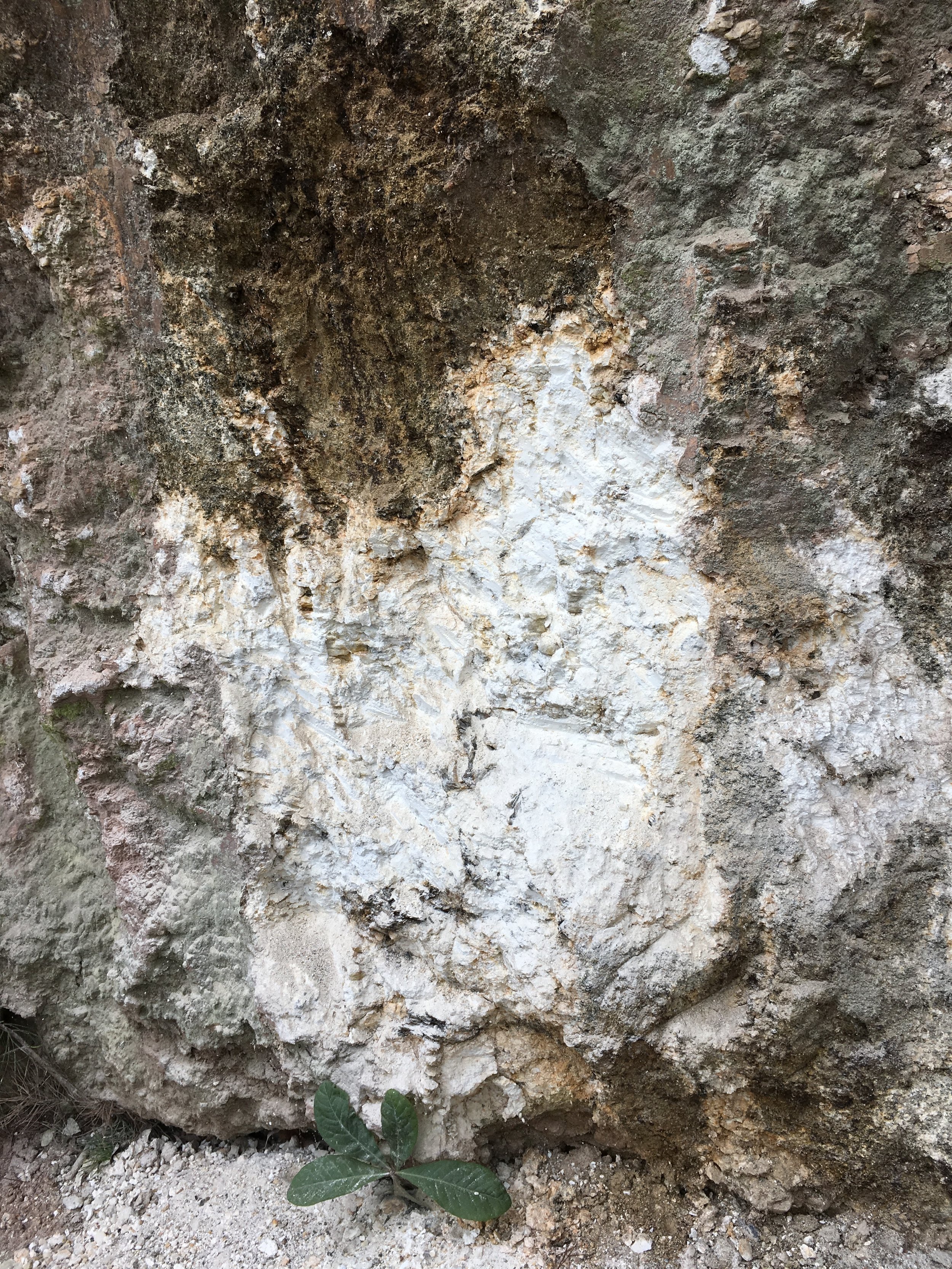
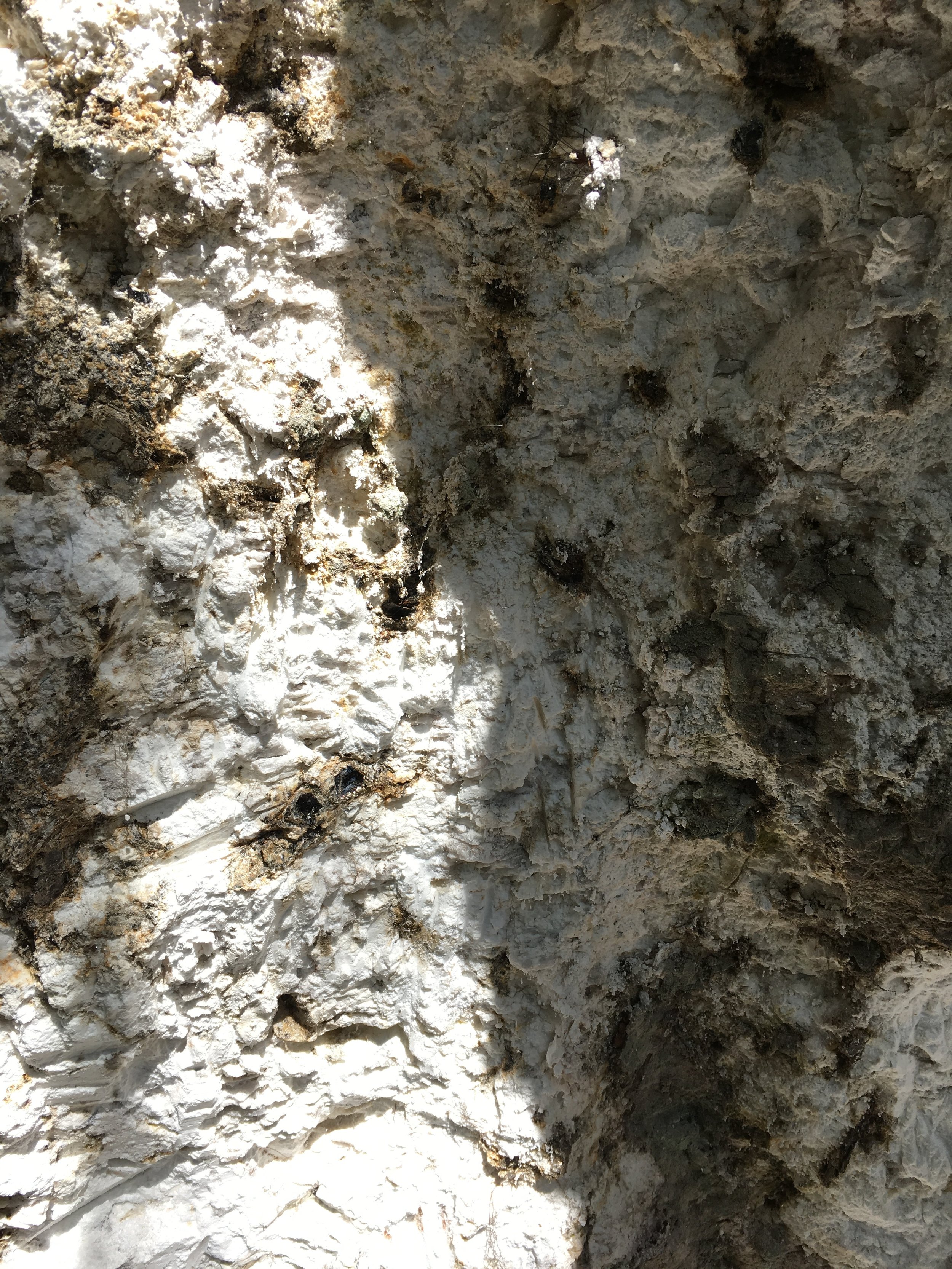


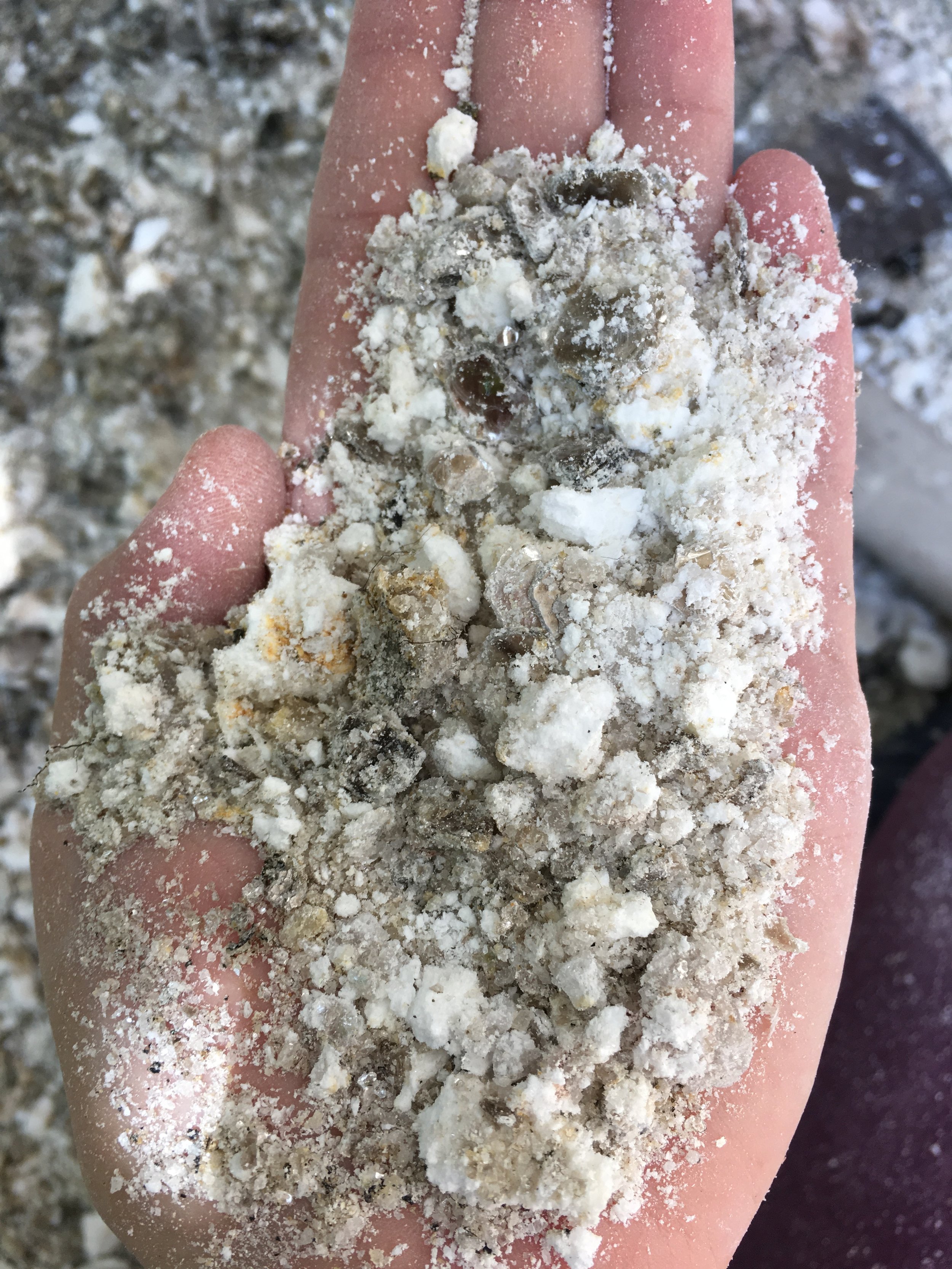
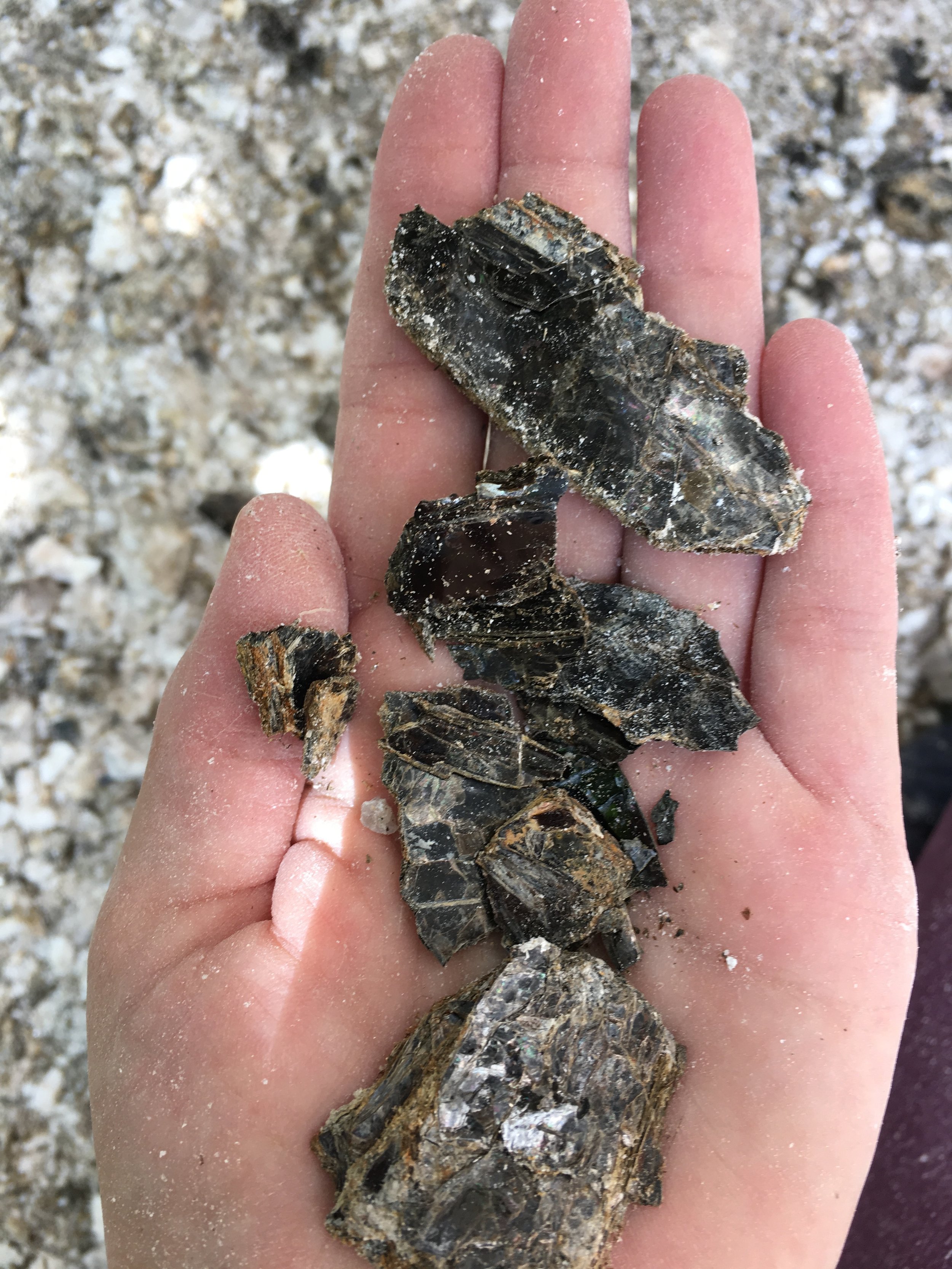




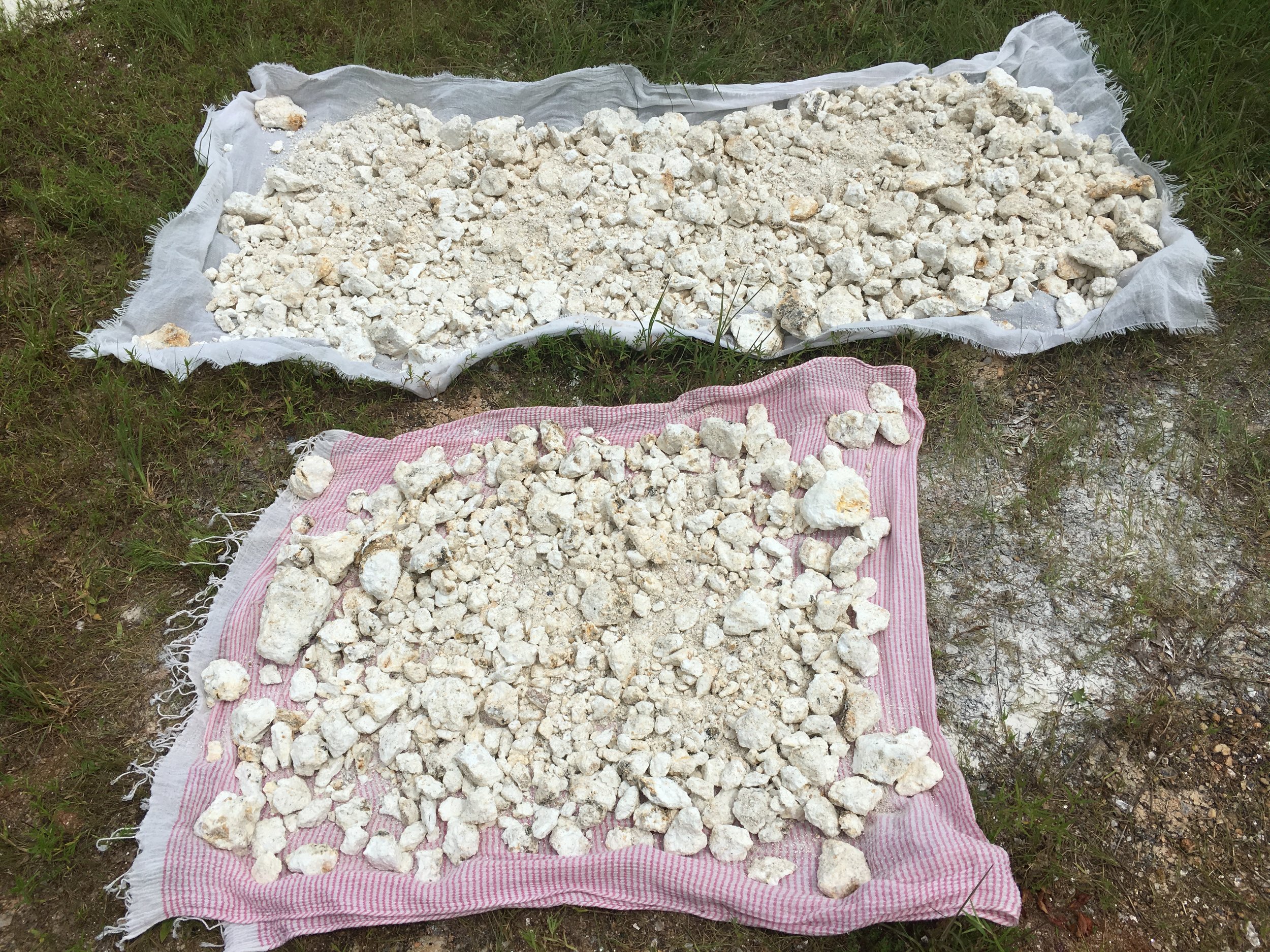
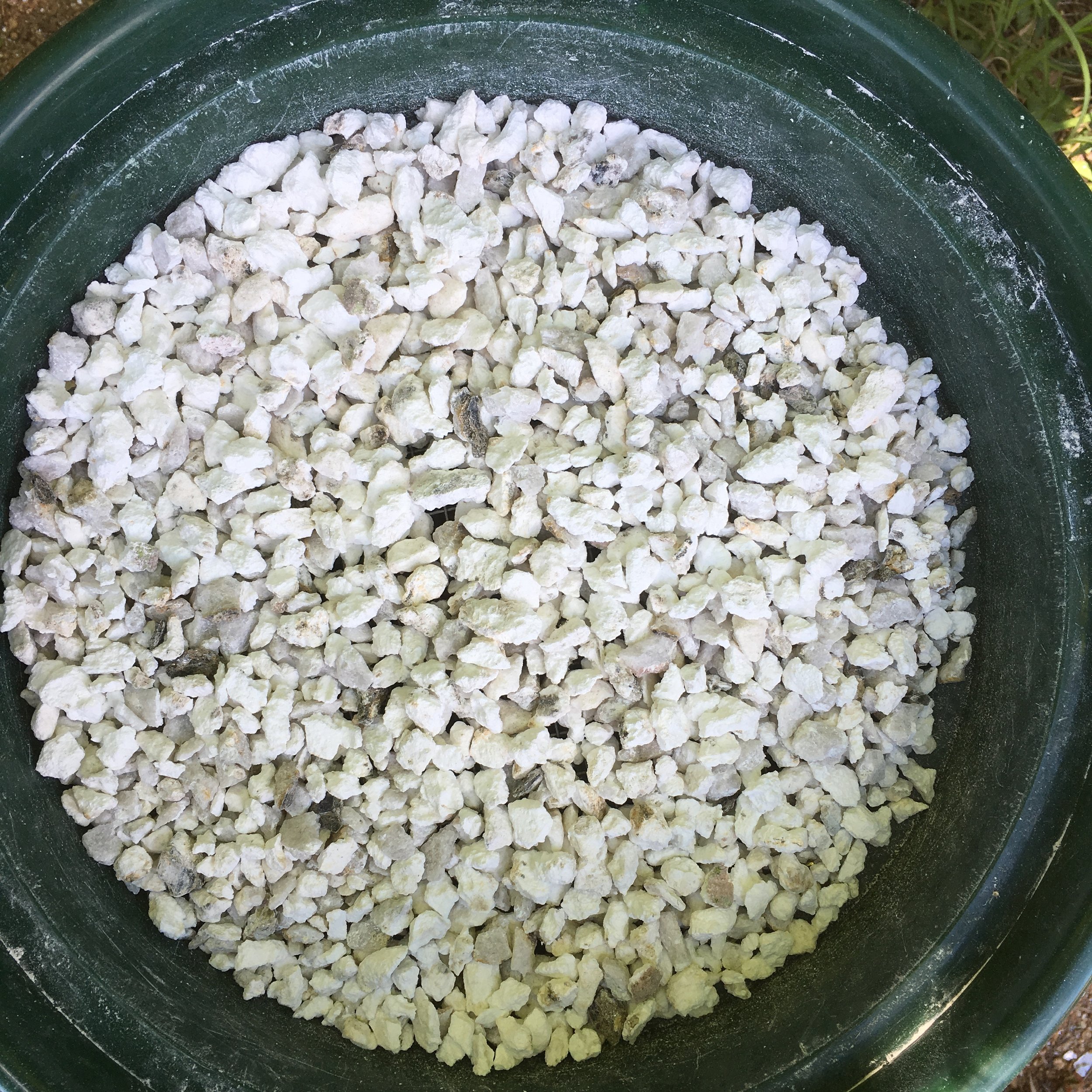
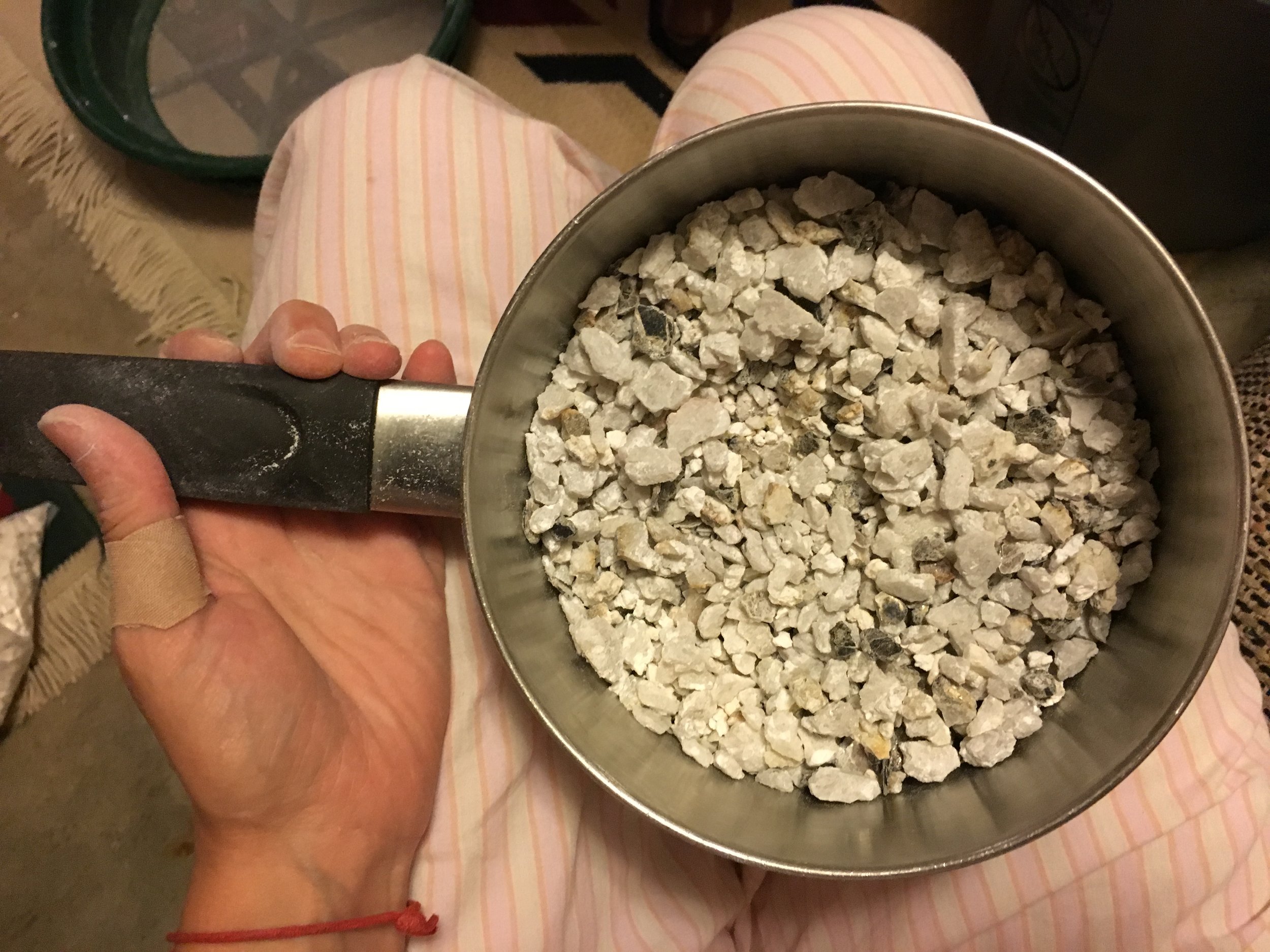
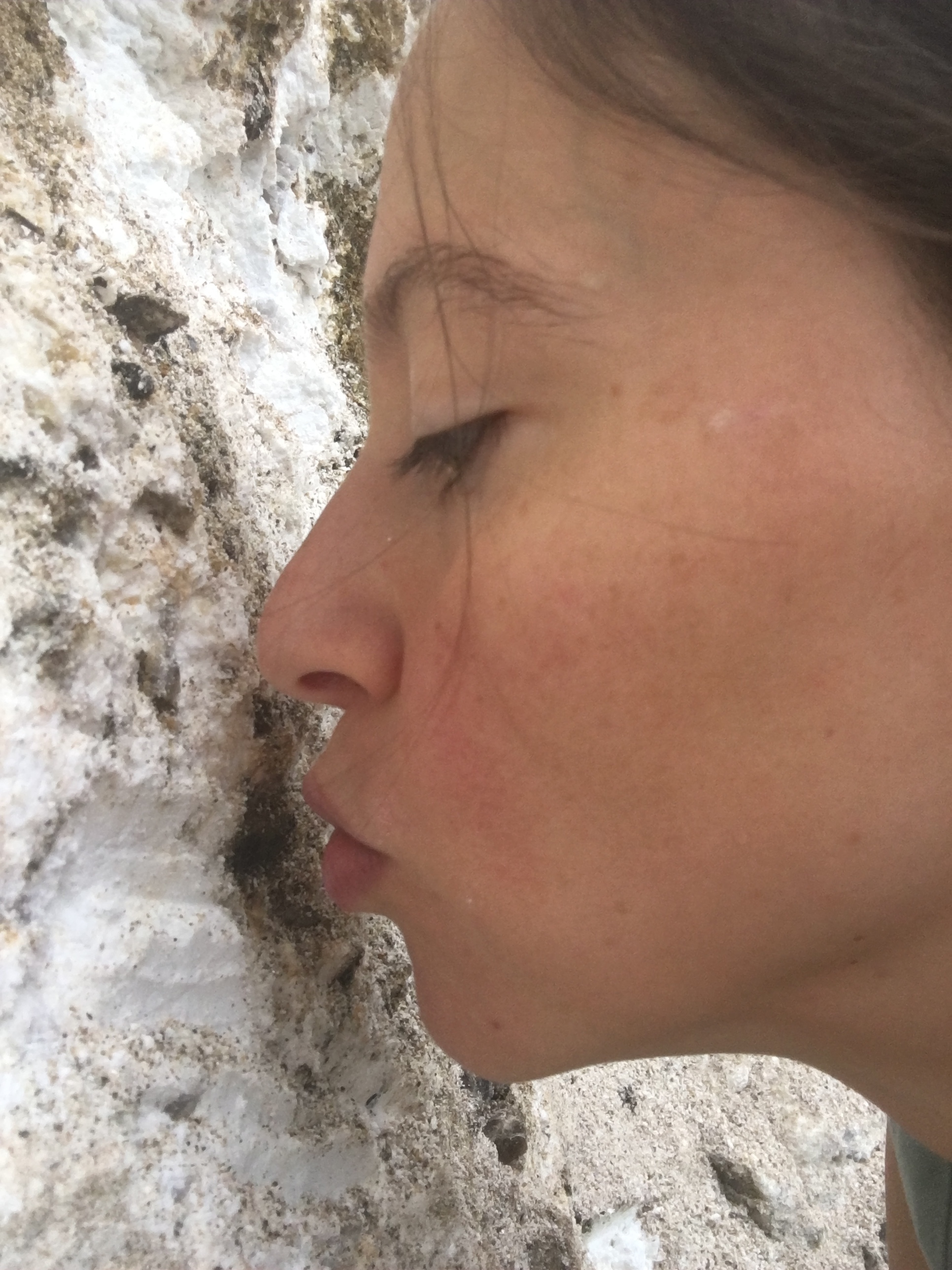
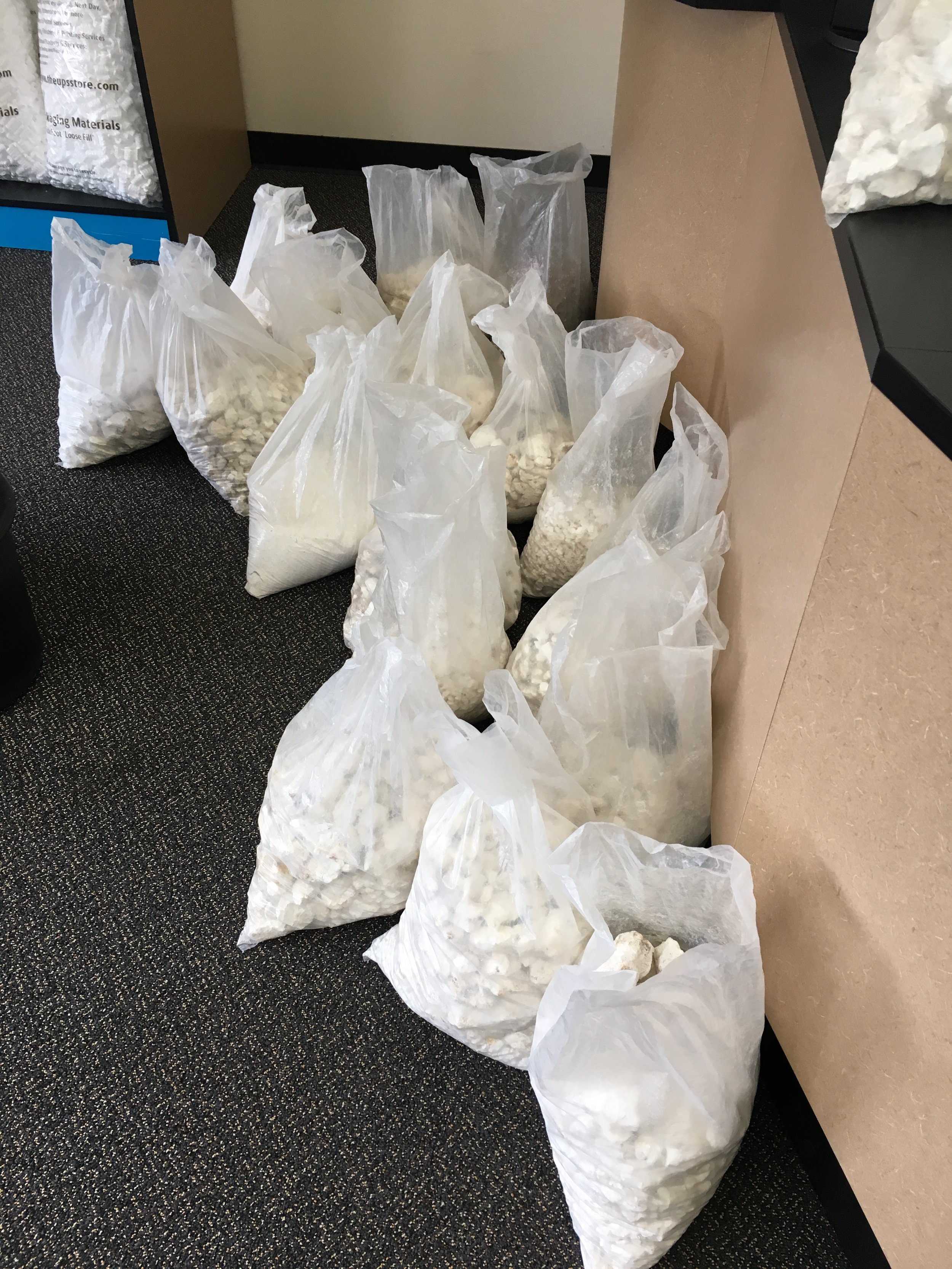
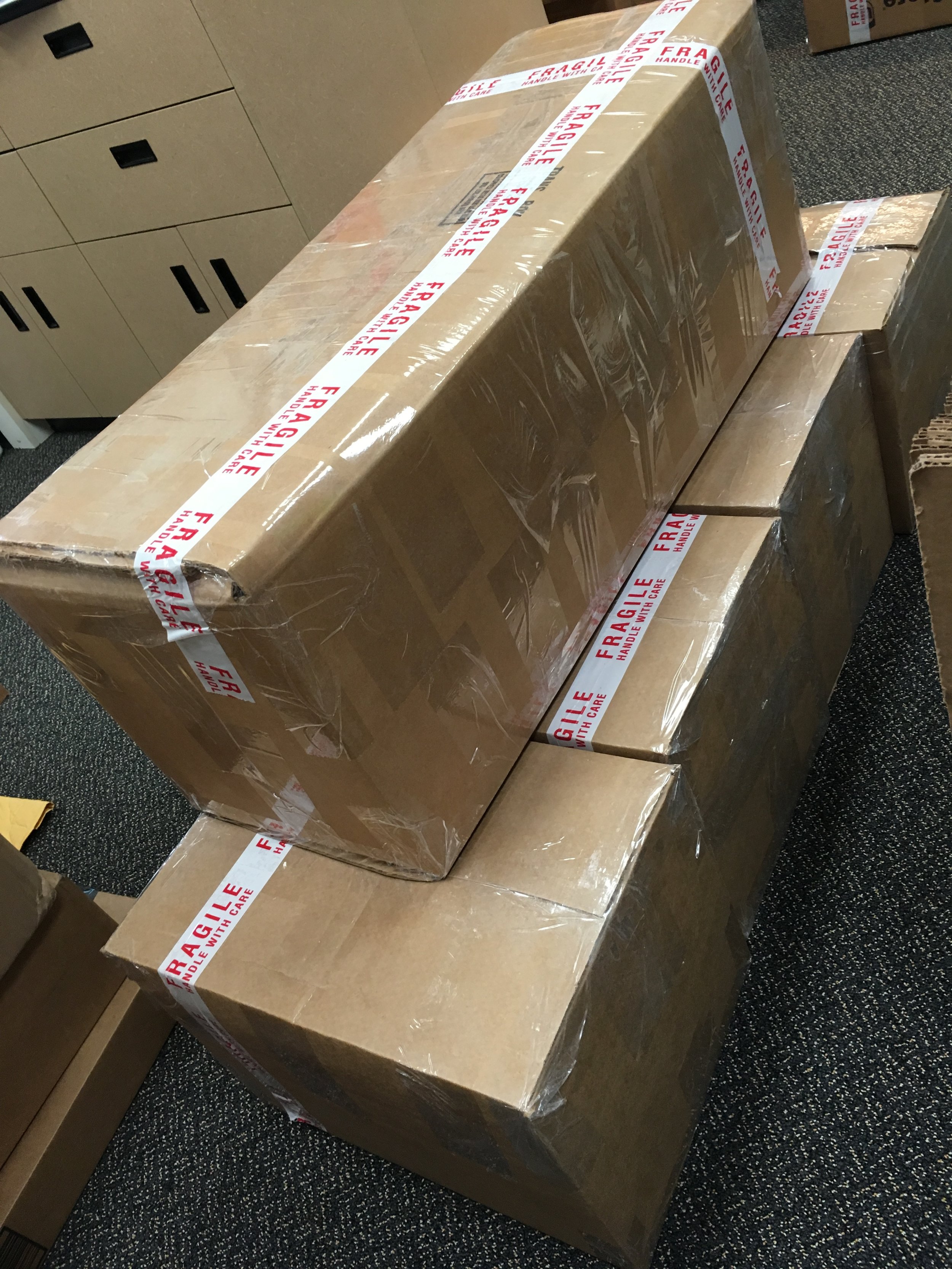
Unaker
project in development
Unaker means white in the Cherokee language. It is was the name for the brilliant clay which the indigenous Cherokee people found in a hillside not far from their prominent villages of Cowee and Nikwasa and a material that they used primarily to insulate and whitewash their houses. They called this hillside Ayoree, which means "offshoot-place." The bright white clay on their sunlit walls shimmered with particles of mirror-like mica. There are still signs near Ayoree of the significant Cherokee settlements of Cowee and Nikwasa - primarily the famous Nikwasa Mound and the more hidden Cowee Mound, which sits on acreage once again owned by the Cherokee (since 2007) on a bend in the Little Tennessee River. Other signs of this vibrant community include the ingenious fish weirs - walls of riverstones shaped into Vs pointed downstream in the Little Tennessee. They were designed to funnel a crowd of fish into a small area so the Cherokee fishermen could choose the most suitable fish for capture. Today this place is commonly called Franklin, situated in Macon County in western North Carolina in the Great Smoky Mountains.
In the mid-18th century, English ceramic innovator Josiah Wedgwood was hungry to claim a leading place creating goods for the burgeoning ceramic luxury-item market. He was among those in Europe eager to participate in porcelain production, as the knowledge of how to produce porcelain clay, "white gold," which had been guarded in secrecy for centuries by the Chinese potters of Jingdezhen, had recently been unlocked by Europeans after great travail in Meissen, Germany, some decades earlier. In the 1760s, Wedgwood learned of this deposit of white porcelainious clay, unaker, extant in Cherokee Territory in the New World. This clay mineral was also known to him by its Chinese-derived name kaolin. The Cherokee are famous for their pottery traditions which reach back thousands of years. Most Cherokee vessels, however, are composed of earthenware clay bodies, deposits of which can be found widespread throughout their region. They fired this pottery (earthenware) at low temperatures and sealed off their porous surfaces through various means. They did not make their vessels using clay minerals like their unaker, because it requires mixing with other minerals and firing at incredibly high temperatures to mature to a vitreous state. However, the Cherokee had periodically sold portions of their unaker clay to colonial interests as early as the 1740s, for it was the Europeans who had porcelain-fever: to Andrew Duché of Georgia, for instance, and to the proprietors of Bow Pottery in England (active 1747-1764; but it is uncertain if the latter ever figured out a successful formula to use unaker effectively, and how much of it they had obtained). It was through this commerce that Wedgwood, his ear perpetually to the ground, learned of the unaker deposit. Wedgwood went to great lengths to obtain some of this "Cherokee clay" because he knew he could capitalize on the exotic romance of the New World wildernesses and "Indians" to attract buyers to the wares he would fashion from it. It is a fascinating and complex story - one that is chronicled beautifully in both The White Road by Edmund de Waal, and Red Brick, Black Mountain, White Clay by Christopher Benfey. Suffice it to say that, for a vast sum of money, Wedgwood purchased and transported five tons of unaker from Cherokee Territory to England in 1767 via a skilled emissary, Thomas Griffiths of South Carolina. As a side note, Wedgwood's fortune accumulated in part from his ultimate use of "Cherokee clay" to produce his famous line of jasper ware, initiated in 1774. Wedgwood funded Charles Darwin, who was related to him through marriage, on his round-the-world voyage on the H.M.S. Beagle from 1831- 1836. This experience proved pivotal to Darwin's formulation of his scientific theories. Thus the unaker clay of Ayoree is linked directly to the writing of On the Origin of Species and the theory of evolution contained within.
Today, in Franklin, North Carolina, it is generally thought that the clay deposit from which Wedgwood obtained his share is currently situated on the "Great Smoky Mountain Fish Camp and Safari," a sprawling property on the Little Tennessee River owned and operated by Jerry and Sabina Anselmo as a haven for serious fly-fishing, river-rafting and canoeing expeditions. I contacted the Anselmos with a request to come to their property to dig some of the Cherokee clay for a project dedicated to the protection of water, and to deepening solidarity between Native and non-Native communities dedicated to water protection. They were supportive. They proved to be incredibly gracious and generous hosts.
In late July and early August of 2017, I spent nine days in western North Carolina, gathering chunks of unaker clay, which is primarily composed of a pure aluminosilicate clay mineral called halloysite. According to the analysis of Alex Glover, a North-Carolina-based clay minerals specialist, clay from this site contradicts its common naming as "kaolin." Kaolin and halloysite are both porcelainious clay minerals, and they are identical in all ways except one:
Kaolin: Al2 Si2 O5 (OH)4
Halloysite: Al2 Si2 O5 (OH)4 2H2O
In halloysite the aluminum and silica have a nano-tubular structure as the platelets wrap around intercalced, non-structural water. This one difference leads halloysite to become even more translucent than kaolin when fired to maturity in a porcelain clay body. Kaolin and halloysite often occur together during the process of the weathering of a pegmatitic vein. The vein in the otherwise red earth of this famous Cowee/Franklin hillside is composed of quartz, feldspar and mica. It is the feldspar that has weathered for millions of years, undergoing the epochal process of "kaolinization." As I mined the material (as pictured above) I had to painstakingly separate the clay minerals from the large amounts of quartz, chunks of unweathered feldspar, and mica also in the vein. In fact, this same site was utilized during WWII as a mica mine, and both (black) biotite and (silver) muscovite varieties of mica are abundant here. As I dug it out, I also had to protect the clay from being stained by the iron-rich red earth right next to it.
While in North Carolina I also made two trips to the town of Cherokee, about an hour north of Franklin. This area, officially called the Qualla Boundary, is home to the present-day Eastern Band of the Cherokee Indians, who number more than 10,000. The consolidation of land through purchases by and for the Cherokee here began in 1840, the year after the conclusion of the forced removal of over 11,000 Cherokee who migrated on the complex network of pathways known as the "Trail of Tears" to northeastern Oklahoma, where they re-established a homeland after enduring unimaginable hardships and casualties on their journey. The Qualla Boundary in North Carolina became the home for those Cherokee who stayed behind either through stealth, hiding effectively in the Smoky Mountain wilderness, or under the protection of white allies, or through prior negotiations and already-established Treaty rights. Some members of today's Eastern Band of Cherokee Indians also descend from ancestors who, upon arrival in Oklahoma, turned around and walked all the way back. The Qualla Boundary has been recognized as sovereign Cherokee territory since 1866. In town I visited the excellent Cherokee Museum and the Qualla Arts and Crafts Mutual.
By the end of my time in Cowee/ Franklin, I was able to ship home to Poughkeepsie, NY about 325 pounds of chunks of unprocessed clay minerals, as well as a bag of biotite mica to grind up, also for use in ceramics. I was poignantly aware that my load (some 20 durable plastic bags), as heavy as it seemed to me - and to the gracious men at FedEx who boxed it up, - it was only a fraction of what Wedgwood obtained from the Cherokee in 1767. However smaller my scale may be, I wish to address the legacy this material embodies: the original energetic of the land; the original people - the Cherokee - who appreciated its beauty as they integrated it into their culture; as well as the history of commercial exchanges between the Cherokee and porcelain-obsessed European traders and colonizers. Though commerce might have initially seemed beneficial to both groups, resulting in some wealth and new goods for Native peoples, ultimately trade and commerce were used by colonizers as tactics for the manipulation, oppression, and disenfranchisement of indigenous people.
Today this site of unaker clay embodies also a sense of invisibility; the way it is so easy to forget, because it is not commonly taught or reinforced, that my home in Poughkeepsie, NY, was inhabited by the Wappinger People (related to both the Lenape to the south and the Mahican to the north) for thousands of years prior to their decimation and dispersal due to European colonization. Their histories beg excavation, remembering, understanding. Back at Ayoree, the quiet grandeur of nature has overtaken the hillside mine, now grown over with pine and hickory, inhabited by butterflies, hummingbirds, spiders, and wasps drawn by the fragrant pine resin. It is difficult to imagine it as it once was, a bustling center of human activity. The occasional visitor has usually been lured by a read of The White Road, and is graciously accommodated by Jerry Anselmo, who leads them up to the site just as he led me there.
As an artist with a fraction of indigenous North American ancestry, who is otherwise of European - colonial and immigrant; British and Irish - descent*, I now have hold of some of this precious material with a complex history that is at once so beautiful and deeply troubling. A project will evolve from this fact, the contours of which I do not yet fully understand. Whatever I end up making with this material I wish for it address some of the wounds of colonial imperialism, which brought and continues to bring the systemic oppression of indigenous people. Pervasive suffering and environmental degradation have accompanied these hegemonic practices. It is vital also to recognize, celebrate, and form further communities of resilience and resistance to this degradation. I will continue to post updates to this page as I make progress on this project.
____________________________
* Please refer to my artist statement Making Connection, Not Claim: On My Native Ancestry for further information on this point.